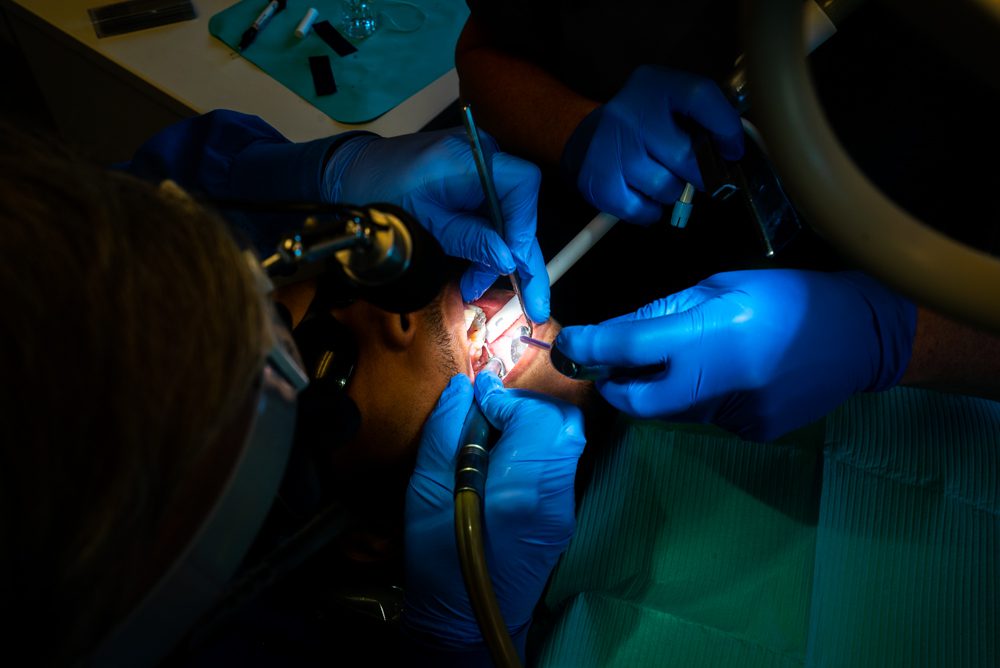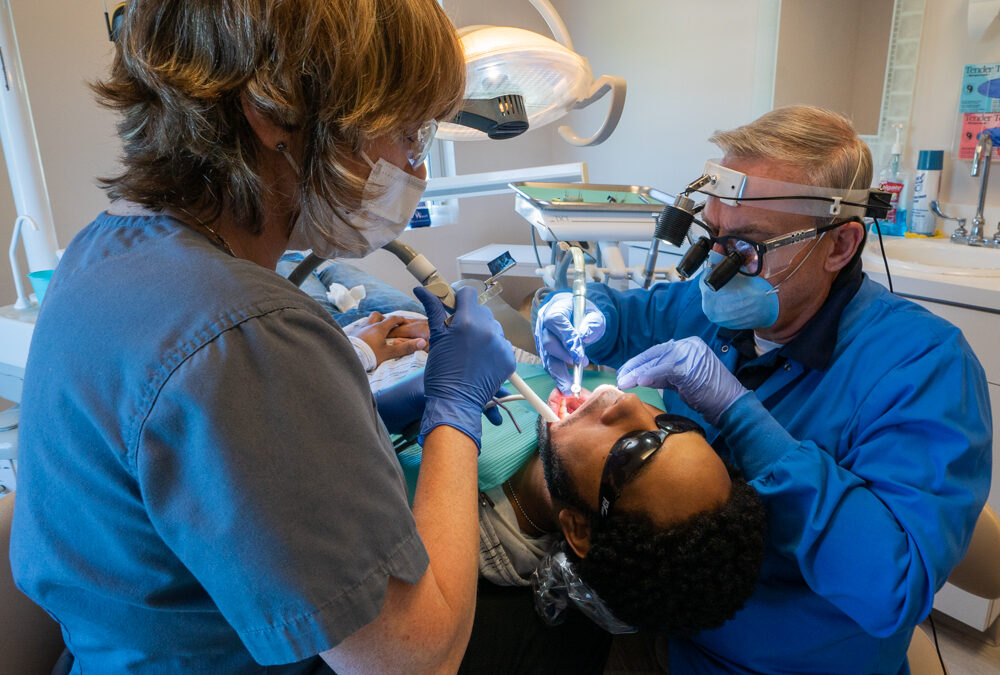Periodontitis, or gum disease, is a serious infection that can cause tooth loss and a variety of other health conditions as it progresses. Although gum disease can have dangerous long-term consequences, we can use modern technology to treat it and prevent things from progressing. At Mill Dam Dental Care, we use a new technology called the DEKA laser for our patients with gum disease. This state-of-the-art tool allows us to treat gum disease more efficiently and prevent future infections. In this article, we’ll take a look at the benefits of laser dentistry for gum disease.
What Is Gum Disease?
Gum disease is extremely common – in fact, approximately 46% of adults experience some form of gum disease during their lifetime. A patient with gum disease will experience swollen, red, and painful gums that bleed easily and may cause halitosis. Over time, the gums can start to recede and pull away from the teeth. In severe cases, this leads to bone loss and even lost teeth.
Gum disease typically happens as a result of plaque buildup. Over time, plaque forms into tartar, which is difficult to remove without the help of a dentist. Plaque and tartar contain high volumes of bacteria, which irritates the gums. As gum disease progresses and your gums continue to recede, pockets form where plaque and tartar build up.
Some patients are more prone to gum disease than others as a result of pre-existing health conditions. Most cases of gum disease are manageable with good dental hygiene and regular trips to the dentist to remove tartar buildup.
What Is Laser Dentistry?
Laser dentistry for gum disease uses modern laser technology for common dental treatments. For example, instead of using a scalpel to conduct dental surgery, we could use lasers to make small incisions.

At Mill Dam Dental Care, we use the Deka carbon dioxide laser for many of our soft tissue treatments. It uses micro-pulsed CO2 technology to power the laser. The laser contains a highly concentrated amount of energy to cut or reshape tissues very efficiently. Lasers are a very new dental technology with many potential applications, and we’re continually incorporating them into our treatment plans.
Laser dentistry is particularly effective for treating gum disease. We use lasers to remove plaque and tartar buildup and sterilize the gum line. Regular tartar removal at the dentist helps to reduce inflammation. We can also use lasers to remove damaged gum tissue.
Benefits of Laser Dentistry for Gum Disease
Gum disease is usually treated with deep cleanings to remove plaque and tartar buildup. Dentists may also prescribe topical antibiotics to prevent infections from getting worse. Patients with gum disease will also need to maintain good oral hygiene habits at home to prevent the gum disease from progressing.
Laser dental treatments can serve as an alternative to traditional treatments. Laser treatments can also be used in conjunction with other care options. Modern laser treatments offer some unique benefits for both patients and dentists. This is because lasers are extremely efficient and precise. Here are some of the unique benefits of laser dentistry for gum disease.
Pain Reduction
Gum disease can be incredibly painful, especially in the later stages of the condition. When inflammation is severe, simply brushing your teeth can feel uncomfortable. Gum disease often requires a deep cleaning under the pockets of the gums, which is deeply painful for many patients and typically requires the use of a local numbing agent.
However, laser dentistry for gum disease is far less painful than a traditional deep cleaning. In fact, many patients don’t need a local anesthetic for a laser treatment. This makes the entire experience more comfortable and less stressful for the patient. An effective laser treatment can also reduce gum pain during your regular oral hygiene routine moving forward.
High Precision
Lasers are small and incredibly precise. This makes it easier for dentists to remove tartar buildup and damage gum tissue without affecting the rest of the mouth. With this high precision device, dentists can provide the best care possible. Lasers also make treatment much more efficient without compromising quality.
Less Bleeding
Patients with gum disease are more prone to bleeding both during and after a dental treatment as well as during routine brushing and flossing. Traditional deep cleaning treatments typically cause extensive bleeding. This makes it more difficult for the dentist to work and can make the treatment take longer. Because lasers are so much more precise, they cause less bleeding and streamline the entire process.
Faster Recovery Time
After a deep cleaning or other invasive procedure for gum disease, patients may experience sore or painful gums for an extended period of time afterwards. During this recovery time, patients are limited in what they can eat or drink. Because laser treatments are less invasive, they also have a faster recovery time. This means that patients can return to their normal routine much faster.
Kills Bacteria
Gum disease is caused in part by a large buildup of bacteria in the patient’s mouth. Lasers have a sterilizing effect, which means they will kill bacteria during treatment. This helps make dental treatments safer and minimizes the risk of a more serious infection developing.
Am I a Good Candidate for Laser Dentistry for Gum Disease?
If you’ve been struggling with gum disease, laser dental treatments may help you. Every case of gum disease is different, so talk to your dentist to see if laser dentistry will work for you. It can be particularly helpful for patients who are sensitive to pain and prefer a less invasive treatment. We’re here to help you get the healthy and happy smile you’re looking for. So if you’re interested in laser dentistry for gum disease, contact Mill Dam Dental Care to learn more.

